How important are fractions?
Fractions are often cited as a “problem area” when I take on new pupils and can cause a lot of anxiety. They can be an area that as parents we either have forgotten ourselves or the methods we use are so far removed from the methods used today that helping our kids ends up causing more confusion. I often hear “we don’t use it in real life anyway” in response to the frustration but mastering fractions is actually very important. Not only does is it in one of the building blocks of further math content but we use the concept in real life far more than is recognised.
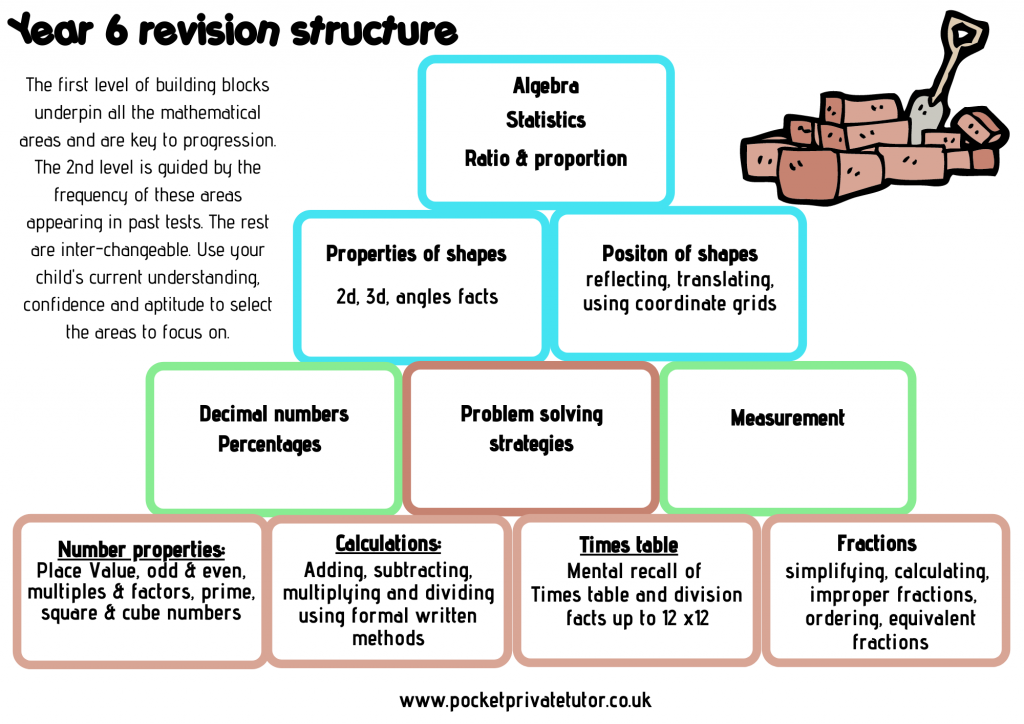
Can my child get better at fractions?
Fractions can be intimidating but it’s often the area I focus on first with a new pupil. I spend a lot of time building confidence in this area because once a child has mastered the concept, it has a huge impact on their confidence and self-belief in maths. Some studies show that an ability to grasp fractions early on is a good predictor of long term math achievement. I always go back to basics and build up understanding of the concept from the beginning. With schemes such as White Rose, there will be a huge amount of time dedicated to learning fractions. I have often heard groans from teachers at the thought of spending 6-7 weeks on this topic but there’s a reason that much time is allocated.
When a child doesn’t “get” fractions, it isn’t because they are somehow just not good at maths, they just need different ways to engage and explore the concept. With large class sizes in school, topics often get rushed and lessons move on before everyone is ready. It is far too easy for a child to move up the year groups with gaps in fraction knowledge that just get bigger and these will make it harder for your child to understand the next step if the gaps are not addressed. I have never met a child who didn’t enjoy getting better at understanding fractions and spending time on building understanding of the concept is the best investment. I personally have found it is the quickest way to improve overall progress.
What is the right way to teach fractions?
While some children find it easy to just remember a taught method, all children benefit from slowing down and taking time to explore the actual concept of a fraction. They need to learn the structure of a fraction, the names of each fraction and what it actually means.
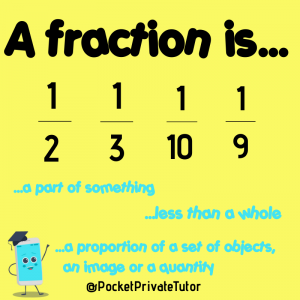

Maths is full of abstract concepts so children need real life manipulatives to help them visualise the concept. Pizzas are cliché but I still love them for demonstrating the concept of equal parts of a whole. Blocks, objects, money, folding pieces of paper, patterns are all ways to introduce the concept of sharing into equal groups and build understanding of this complex concept.
Understanding the terms numerator and denominator are also key to starting the understanding. This past year I have been working in a Year 3 class. Having had so much experience of where they need to be at the end of Key Stage Two, in Year 6, helped me to ensure I built solid blocks with their learning early on. Even at the age of 7 & 8, my pupils wowed me with their ability to apply what they had learned through exploration, games and manipulatives to some more complex fraction skills that they won’t need until Year 5! This is because through “playing and exploring” they started to make links to their times table and division themselves.
Why use manipulatives when we can teach shortcuts?
Take for example finding non unit fractions of a number. We can teach “divide by the denominator and multiply by the numerator” Some children will do fine with remembering this but there are a lot of things like this to remember by the time you get to Year 6 so it is common that they get to a question and their mind go blank! When a child understands that the denominator shows how many equal parts there are and the numerator shows how many of those equal parts are needed, they have tools to figure out the answer even when they have forgotten the “mantra!”
I start with finding fractions of amounts using manipulatives and then progress onto bar model until they see the link to the times tables for themselves- which they always do! Kids are great at finding shortcuts!
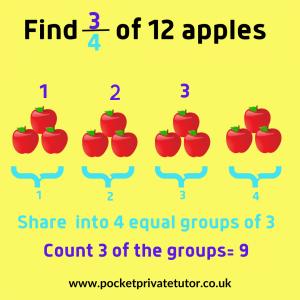
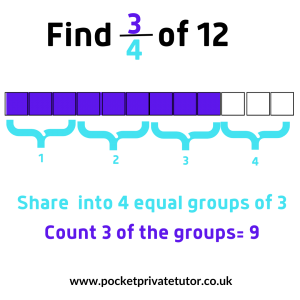
Another example is when adding and subtracting fractions. A common misconception is to add both the numerator and denominator instead of keeping the denominators the same. Again this is a “rule” that children can simply remember but I always like to demonstrate the WHY. This is where pizzas come in! Take 2 pizzas both cut into eights. I can show that 5/8 + 6/8 = 11/8 and not 11/16. I can show that it isn’t “fair” to add 5 slices from a pizza cut in 8 to 6 slices from a pizza cut into 8 slices. I can also use this to show that 11/8 is the same as 1 whole pizza and 3/8 and vice versa.
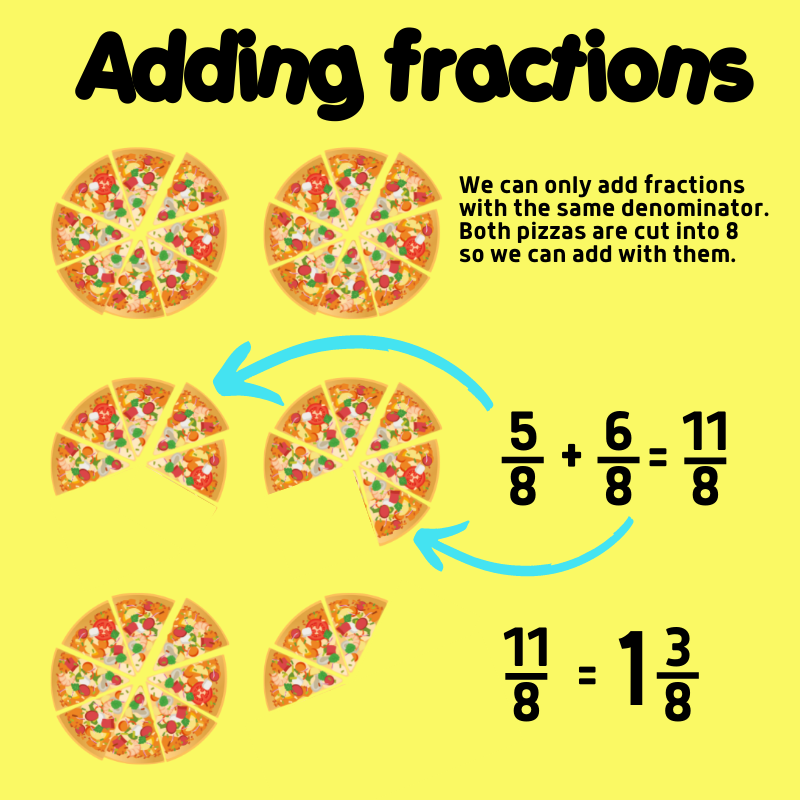
Once children find the “shortcuts”, make links AND are able to verbalise WHY the shortcuts work, they are already in a position where the concept is secure. Of course they will need to revisit this over and over. It is normal to learn something, forget it and then learn it again, but each time the learning is building upon prior learning it gets more and more embedded. That’s what revising is, revisiting prior learning.
How do fractions link to other maths?
Fractions is most obviously linked to times-tables and division so engaging with fractions will help consolidate these skills but will also be much easier if children are fluent with their table facts. An understanding of multiples and factors is also very useful when finding equivalent fractions and simplifying as is the concept of prime numbers Fractions are just another way of representing percentages too, which is a key area of maths. A secure understanding of fractions will also help with measures, time, ratio, pie charts, geometry and algebra. A recent study summarised that
“knowledge of fractions at age 10 would predict algebra knowledge and overall mathematics achievement in high school, above and beyond the effects of general intellectual ability, other mathematical knowledge, and family background.”
Personally I have found that it is a child’s self-belief that has the biggest impact on their progress. When a child feels confident in fractions, they generally feel better about their own abilities in maths in general and then as a result they are more likely to give hard things a try, and persevere. Fractions really don’t get much harder when our children go up to secondary school either. Compare these two fraction questions taken from actual past test papers. Personally, I think the GCSE question is harder! It is actually a fraction skill that is required by Year 5!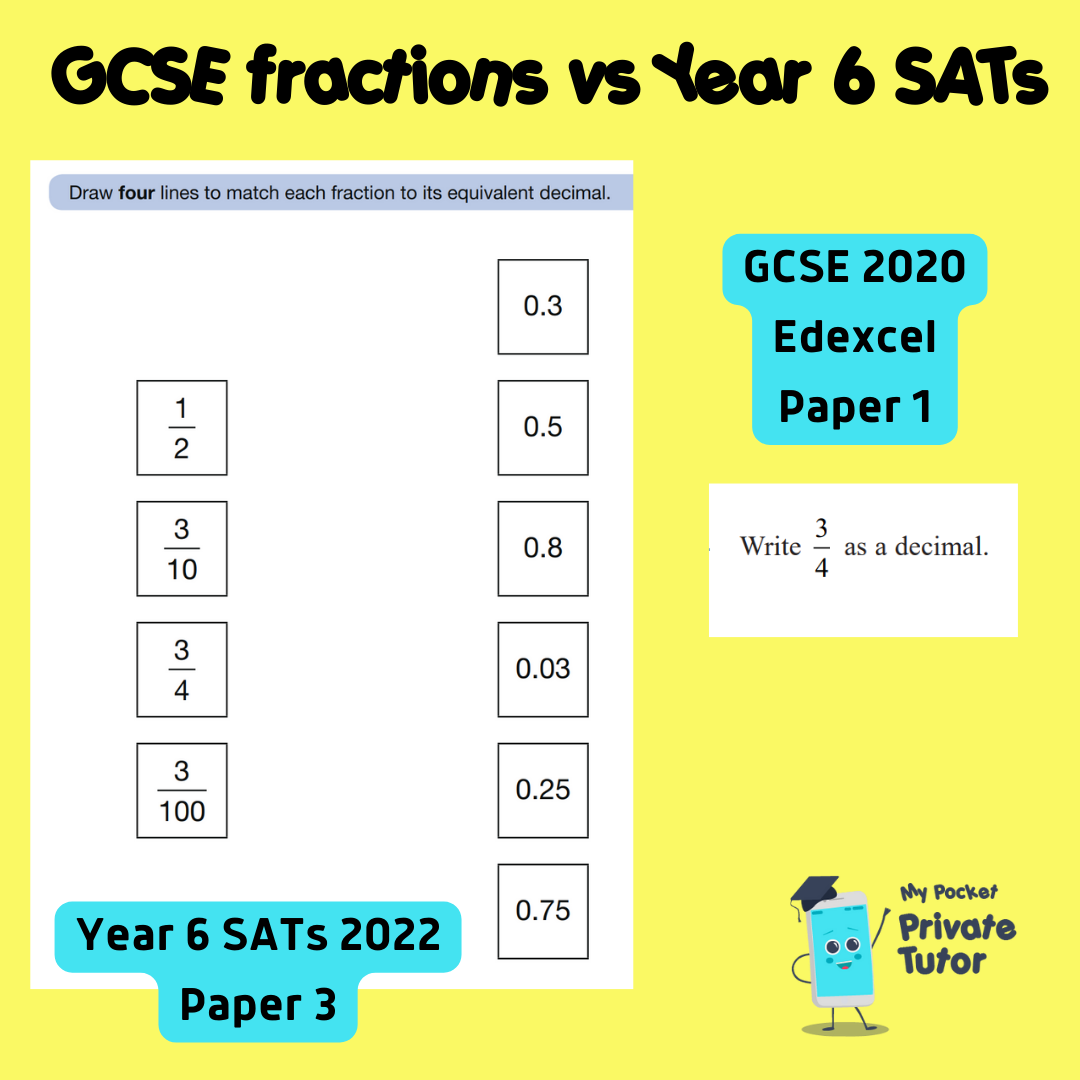
Do we really need fractions in real life?
Despite what you may think, we use fractions all the time! We use it in cooking; in sharing out meals (or any sharing for that matter); we use it when thinking about time; it links to our finances and budgeting; we may use fractions when planning journeys. We use fractions all of the time without really thinking about it. When we tell our kids that fractions don’t matter, it doesn’t motivate them to want to crack them!
How can I help my child fill any gaps in their understanding?
I have a few resources on fractions which I will list and explain. All of my resources come with guided video tutorials and printable worksheets with answers included.
- Year 6 SATs revision app: Choose to download from the Google Play or Apple store according to your phone or tablet device. The app covers every single learning objective there is from the Year 6 National Curriculum. In terms of Fraction content, you can also access the same content as an ebook instead and then keep these for life and access via a laptop. More info on Year 6 Fractions and Year 6 Fraction Decimals and Percentages detailed below.
- Fraction Foundations covers all of the fraction skills taught throughout Key Stage Two, right from the start in Year 3. There are assessment materials included so you can check where your child’s gaps are easily and then find the lesson video that will fix the gaps. All worksheets come with the answers included. All skills are taught using up to date and relevant methods. This course covers everything up until the end of Year 5 curriculum. There are also post assessment materials so you can check if your child can do something that they couldn’t before.
- Y3/4 To understand what a fraction is
- Y3/4 To find a unit fraction of a number
- Y3/4 find a non- unit fraction of a number
- Y3/4 To begin adding and subtracting fractions <1 (Y3) & >1 (Y4)
- Word problems 1 (no tutorial)
- Y3/4 To recognise families of equivalent fractions
- Y3/4 To understand and count up in tenths
- Y4 To understand and make links to hundredths
- Y5 To identify, name and write equivalent fractions
- Y5 Add subtract fractions with denominators same multiple
- Y5 Find a fraction of an amount
- Word Problems 2 (no tutorial)
- Y5 Compare and order fractions
- Y6 Add subtract fractions with different denominators
- Y5/6 convert improper fractions to mixed numbers using bars
- Y5/6 multiply fractions using bars
- Y6 divide fractions by a whole number
- Focus on Fractions course: 6 easy to follow tutorials covering some of the most common fraction questions found in the Year 6 SATs. This is perfect for SATs revision if your child needs to top up their knowledge rather than learn from the basics.
- Session 1: Adding fractions (including different denominators, mixed numbers and improper fractions)
- Session 2: Subtracting fractions (including different denominators, mixed numbers and improper fractions)
- Session 3: Multiplying fractions (including different denominators, mixed numbers and improper fractions)
- Session 4: Dividing fractions (including different denominators and improper fractions)
- Session 5: SATS Reasoning Paper – Part 1: different formats for fraction questions in Papers 2 & 3
- Session 6: SATS Reasoning Paper – Part 2: fraction questions in different contexts in Papers 2 & 3
- Year 6 Fractions: A 6 part course covering Year 6 National Curriculum objectives for fractions. These are also available on the app but with Past SATs questions included. Purchasing this digital copy means you have it for life vs via the app you have access while you are subscribed.
- use common factors to simplify fractions; use common multiples to express fractions in the same denomination
- compare and order fractions, including fractions > 1
- add and subtract fractions with different denominators and mixed numbers, using the concept of equivalent fractions
- multiply simple pairs of proper fractions, writing the answer in its simplest form
- divide proper fractions by whole numbers
- associate a fraction with division and calculate decimal fraction equivalents for a simple fraction
- Year 6 Fraction Decimals and Percentages: A 6 part course covering Year 6 National Curriculum objectives for equivalence. These are also available on the app but with Past SATs questions included. Purchasing this digital copy means you have it for life vs via the app you have access while you are subscribed.
- identify the value of each digit in numbers given to three decimal places and multiply and divide numbers by 10, 100 and 1000 giving answers up to three decimal places
- multiply one-digit numbers with up to two decimal places by whole numbers
- use written division methods in cases where the answer has up to two decimal places
- solve problems which require answers to be rounded to specified degrees of accuracy
- recall and use equivalences between simple fractions, decimals and percentages, including in different contexts.
Make learning fun
Some of my favourite online games to help test fraction knowledge are:
- Maths Frame: there are loads of free games to play and you can choose which math skill to practice. I have found these really useful for practising and gaining some fluency. Once a child understands how to find fractions of numbers or simplifying etc… they use this to simply get better while having fun
- TopMarks: This website has a number of diferent fraction games which can help your child to explore the concept in a very visual way.
- Splash Learn: Another website with lots of visual ways to explore and consolidate different fraction concepts
- Snappy Maths: This website has interactive games and printable worksheets
- Nrich: This is a great site for investigations and problems to deepen understanding
- Make up your own! I have played matching games, like Kim’s game, where you match up pairs (1/4 = 25% etc) but spread cards out in your back garden and time how quickly your child can find the matching pairs. There are lots of ways you can make a topic fun and children tend to like moving. The amount of times I have taught a lesson and instead of straight answering questions, involved some kind of movement and fetching of questions and answers and the children have asked me afterwards when they will be doing maths- they always love it. You can make it a timed thing or like a treasure hunt and hide the matching pairs. Be as creative as you can!
Other ways I can support you
You can join my Year 6 Maths SATs group here
You can access all the free maths resources I have created before and receive any new ones by joining my mailing list.
You can also receive FREE Year 6 SATs Revision grids by downloading the SATs revision app. It is completely free to download and doesn’t convert to a paid subscription unless you opt to do so. The free version gives you access to 6 of the 49 lessons. To subscribe it is £9.99 per month or £79 for a full year. Having the app puts you on my list for a free emailed SATs revision grid every week until the SATs take place next May.





Leave a comment
Sign in to post your comment or sign-up if you don't have any account.